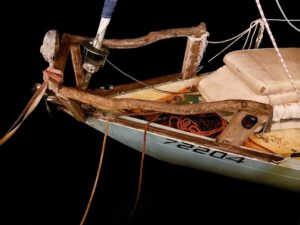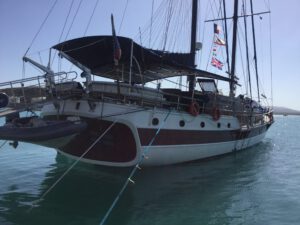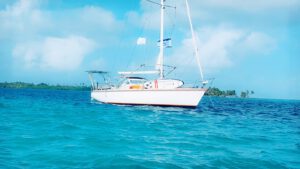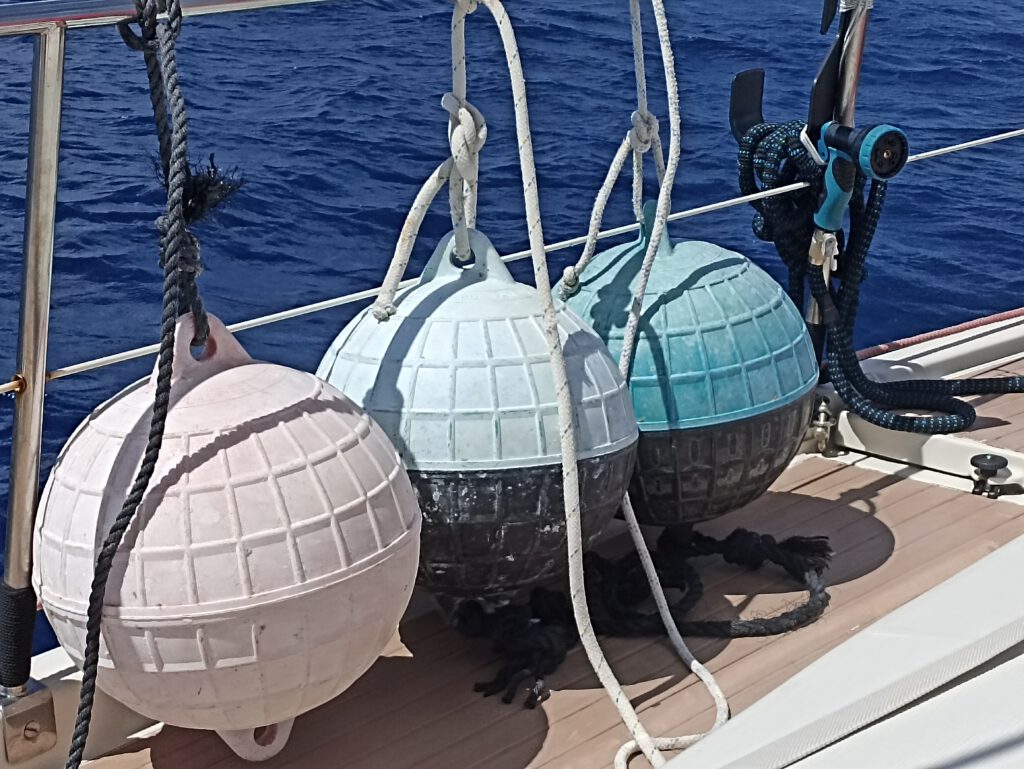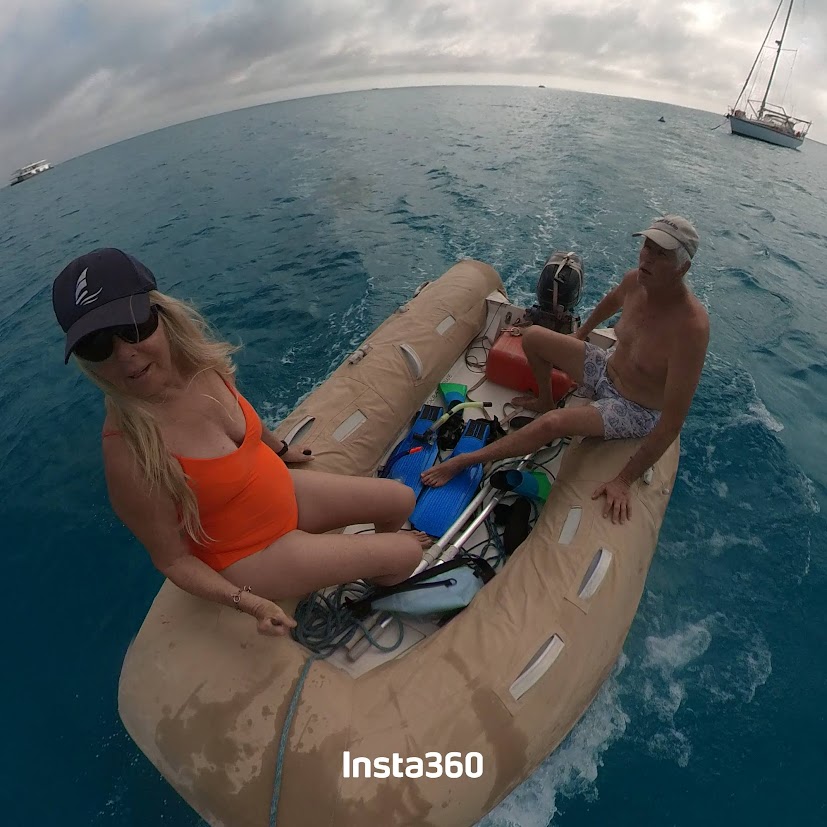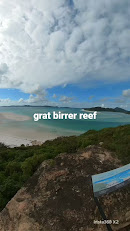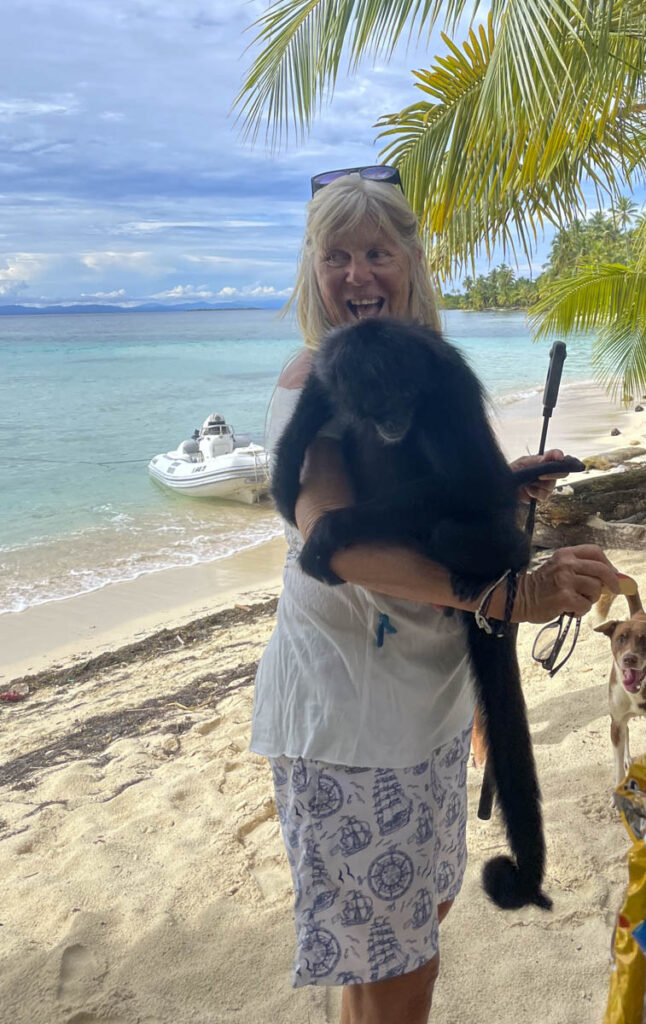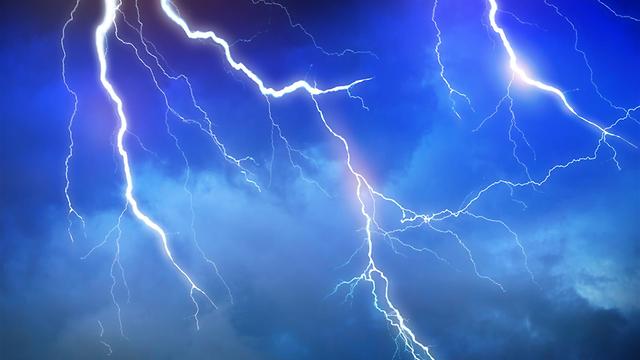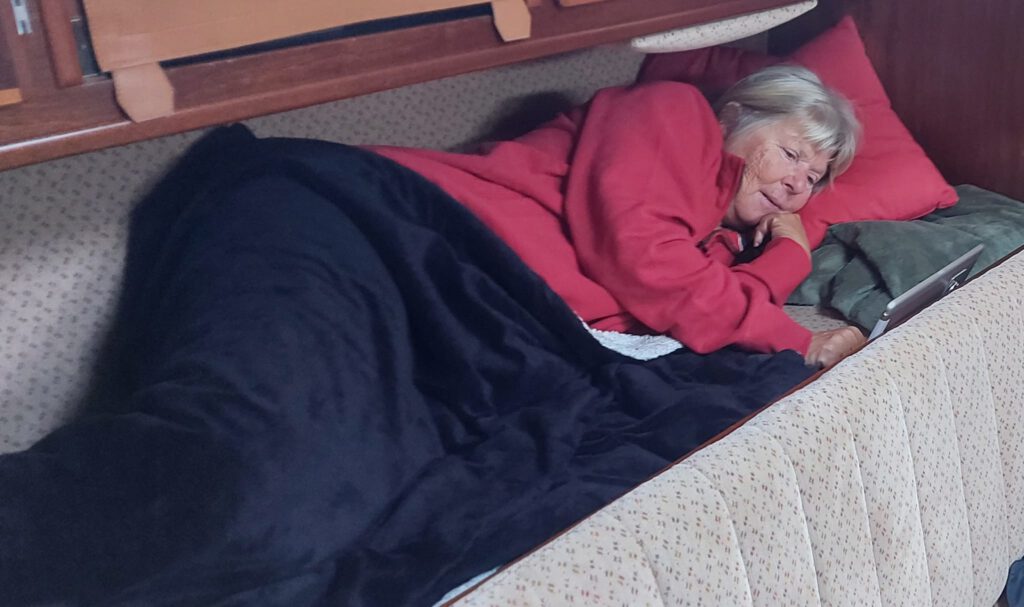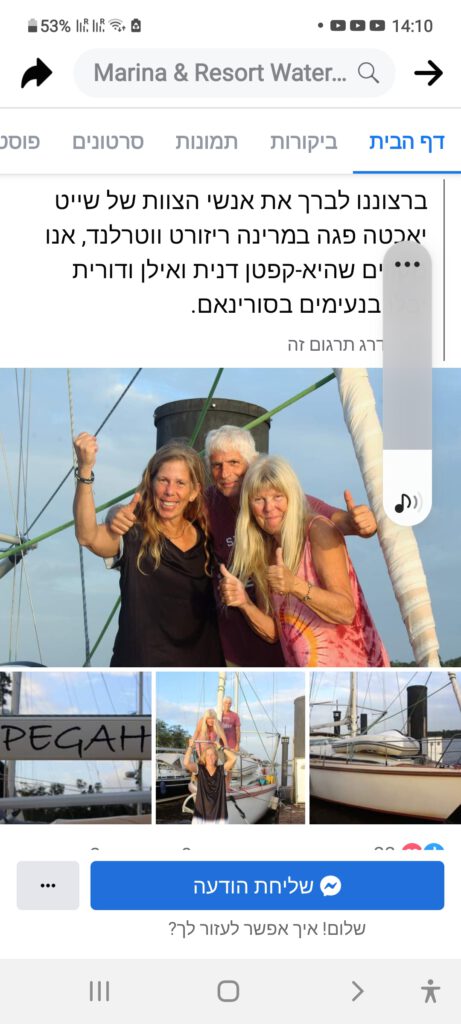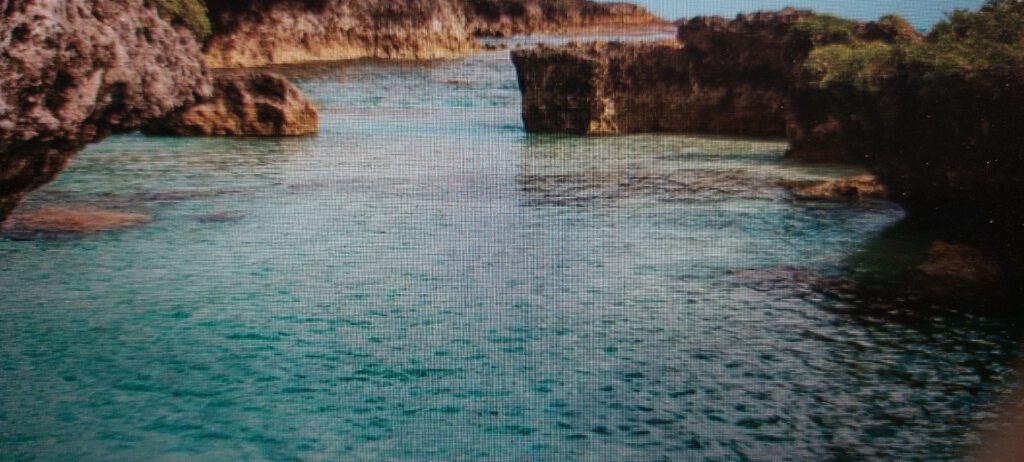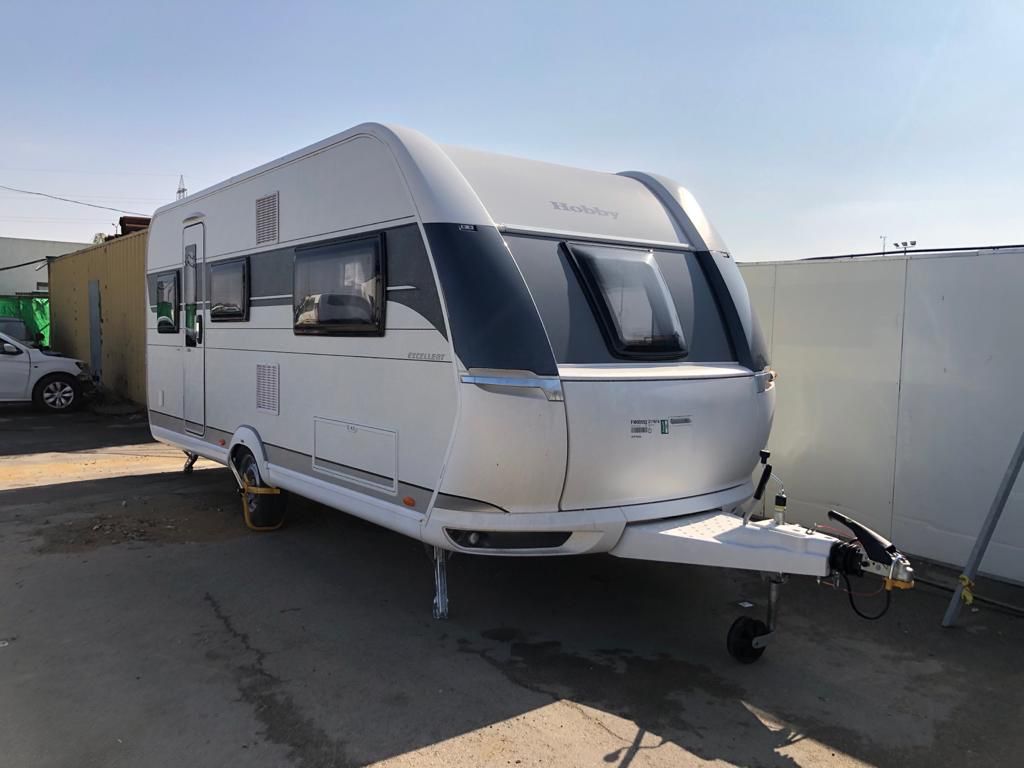The perfect yacht for sailing
After crossing the Pacific I think it is possible to know a little more what would be the ideal yacht for sailing around the world.
Almost every yacht will cross the ocean, you can sail, from a kayak through a super yacht, the question is what yacht is right for you?
If your dream is to sail slowly, to slow down and experience places, your yacht will be different from a sailor who dreams of sailing fast and if all the options and treats are available.
They think that the bigger is the better… and that’s really not true, if the size of the yachts has increased over the years, but if you are sailing as a couple it is very important to check what size yacht you can take care of, take care of and sail comfortably.
A yacht over 40 feet is already more difficult to manage the sails without electric winches and additional electric help.
It is important to know what the budget is for buying the yacht and it is even more important to know what the budget is for maintaining the yacht during the voyage, shore excursions and unexpected repairs during the voyage.
Part of deciding which yacht will suit me is related to the sailing time, the time spent on the yacht during the year.
One of the most important things on a short voyage and safe on a long voyage is to take care of the sailors and crew for a good night’s sleep in dry rooms, a good rest during the shifts, a comfortable cockpit protected against rain, sun and storms.
It is important that the crew is familiar with the yacht and the systems that operate on it, that all systems be in working order for a long voyage without the ability to reach the marina or the help of a professional.
Monohull or catamaran?
Mono Hull – on long voyages, the longer the keel, the higher the ability of the yacht to maintain a straight course. A yacht that is more suitable for sailing along the coast is not necessarily suitable for sailing across the ocean, and the structure of the yacht must be trusted
Multihull – the pressure on the sails in a catamaran yacht is much greater than in a sailing yacht, because a catamaran does not lie down to the wind, and therefore catamarans are built lighter and should remain as light as possible.
A catamaran is faster and sometimes you have to reduce its speed, fast sailing is dangerous for the structure of the yacht, and it is easier for it to capsize, even though today they build catamaran yachts so that even if they capsize they do not sink.
Sails? Electric or manual, rolls to the mast or isipack, additional sails – spinnaker, drifter, storm
Amount of liquid? Water, fuel
gas? Butane or propane or both
Slope pumps? How much, where, automatic, manual
alarms? Fire, gas, shingles, light+sound, AIS ‘MOB’ PLB
Rescue equipment…how much to invest? Rescue rig, personal PLB, personal AIS, AIS radar
Abandonment bag – copies of passport, copy of ship’s paperwork, copy of insurance, PLB, compass, manual VHF, GPS + batteries, manual phone, fishing equipment, sunscreen, solar charger, water and food
Solar panels? It is mandatory to install panels, of course if there is no generator, the panels should be installed in a place that will not be shaded throughout the day
Minimum electricity consumption in the yacht –
Autopilot 5 AMP per hour / 120 AMP per day
Devices 2 AMP per hour / 48 AMP per day
2 AMP / 24 AMP night masthead light
Cabin lights 4 AMP / 3 hours 12 AMP
VHF 2 AMP/
Total minimum consumption in the yacht around 300 AMP
In the calculation, we need to multiply by 3, and we need 900 AMP from the minimum electricity input to the yacht when there is no generator.
The main consumer is the automatic rudder which consumes more and more electricity when the wind increases and he exerts himself, at this point the crew has to help him and hold the rudder.
More and more catamarans are seen on cruises around the world and more and more thermians, comfortable and spacious yachts, and getting from place to place is faster.
?מהי היאכטה המושלמת להפלגה
אחרי חציית הפסיפיק אני חושבת שניתן לדעת קצת יותר מה תהיה היאכטה האידאלית להפלגה מסביב לעולם.
כמעט כל יאכטה תחצה את האוקינוס, תוכל להפליג ,מקיאק דרך סופר יאכטה, השאלה היא מה היאכטה שמתאימה לך?
אם החלום שלך היא להפליג לאט לאט ,להאיט ולחוות מקומות היאכטה שלך תהיה אחרת ממפליג שחולם להפליג מהר ואם כל האפשרויות ופינוקים שיש.
חושבים שהגדול הוא הטוב יותר…וזה ממש לא נכון, אם השנים גודל היאכטות עלה, אבל אם אתם מפליגים בזוג מאוד חשוב לבדוק איזה גודל יאכטה תוכלו לטפל, לדאוג ולהפליג בנוחות.
יאכטה מעל 40 פיט כבר יותר קשה לנהל את המפרשים ללא ווינצים חשמליים ועזרה חשמלית נוספת.
חשוב לדעת מה התקציב לקניית היאכטה ויותר חשוב לדעת מה התקציב לאחזקת היאכטה במהלך ההפלגה, טיולים בחוף ותיקונים לא צפויים במהלך ההפלגה.
חלק מקבלת ההחלטה איזה יאכטה תתאים לי קשור לזמן ההפלגה ,זמן השהייה ביאכטה במהלך השנה.
בן הדברים החשובים בהפלגה קצרה ובטוח בהפלגה ארוכה לדאוג למפליגים ולצוות לשינה טובה בחדרים יבשים, מנוחה טובה בן המשמרות, קוקפיט נוח ומוגן נגד גשם ,שמש וסערות.
חשוב שהצוות יכיר את היאכטה והמערכות הפועלות בו, שכל המערכות יהיו תקינות להפלגה ארוכה ללא יכולת להגיע למרינה או לעזרה של בעל מקצוע.
מונוהול או קטמרן?
מונו הול- בהפלגות ארוכות ככל שהקיל ארוך יותר, היכולת של היאכטה לשמור על כיוון ישר גבוה יותר. יאכטה שמתאימה יותר להפלגות לאורך החוף לא בהכרך מתאימה להפלגה של חציית אוקינוס, וחייבים לסמוך על מבנה היאכטה
מולטי הול- הלחץ על המפרשים ביאכטה קטמרן גדול בהרבה מאשר ביאכטה מפרש, בגלל שקטמרן לא נשכבת לרוח, ולכן הקטמרנים נבנים קלים יותר וצריכים להישאר כמה שיותר קלים.
קטמרן מהירה יותר ולפעמים צריך להוריד לה את המהירות, הפלגה מהירה מסוכנת למבנה של היאכטה , וקל לה יותר להתהפך , למרות שהיום בונים יאכטות קטמרנים שגם אם הם מתהפכים הם לא טובעים.
מפרשים? חשמלי או ידני, מתגלגל לתורן או איזיפאק, מפרשים נוספים-ספינקר, דריפטר, סערה
כמות נוזלים? מים, דלק
גז? בוטן או פרופן או שניהם
משאבות שיפוליים? כמה, איפה, אוטומטי, ידני
אזעקות? אש, גז, שיפוליים, אור+קול,AIS ‘MOB’ PLB
ציוד הצלה…כמה להשקיע? אסדת הצלה,PLB אישי,AIS אישי,AISראדר
תיק נטישה- העתקי דרכון, העתק ניירת ספינה, העתק ביטוח,PLB,מצפן,VHF ידני,GPS +בטריות, טלפון ידני, ציוד דייג, קרם הגנה, מטען סולרי, מים ומזון
פנאלים סולרים? חובה להתקין פנאלים בטח אם אין גנרטור, הפנאלים צריכים להיות מותקנים במקום שלא יהיה מוצל לאורך כל היום
צריכת חשמל מינמלית ביאכטה –
הגה אוטומטי 5 AMP לשעה /120 AMP ליום
מכשירים 2 AMP לשעה / 48 AMP ליום
אור ראש תורן 2 AMP / 24 AMP ללילה
אורות קבינות 4 AMP / 3 שעות 12 AMP
VHF 2 AMP/
סה”כ צריכה מנימלית ביאכטה בסביבות 300 AMP
בחישוב צריך להכפיל ב-3 , ואנו צריכים 900 AMP מנימום כניסת חשמל ליאכטה כאשר אין גנרטור.
הצרכן הראשי הוא ההגה האוטומטי אשר צורך יותר ויותר חשמל כאשר הרוח עולה והוא מתאמץ, בשלב זה הצוות צריך לעזור לו ולהחזיק הגה.
יותר ויותר רואים בהפלגות מסביב לעולם קטמרנים ויותר ויותר תרי- מרנים, יאכטות נוחות ומרווחות , וההגעה ממקום למקום מהירה יותר.
The guy and the most amazing yacht we met along the way – worth a look הבחור והיאכטה הכי מדהימה שפגשנו בדרך-שווה צפיה





